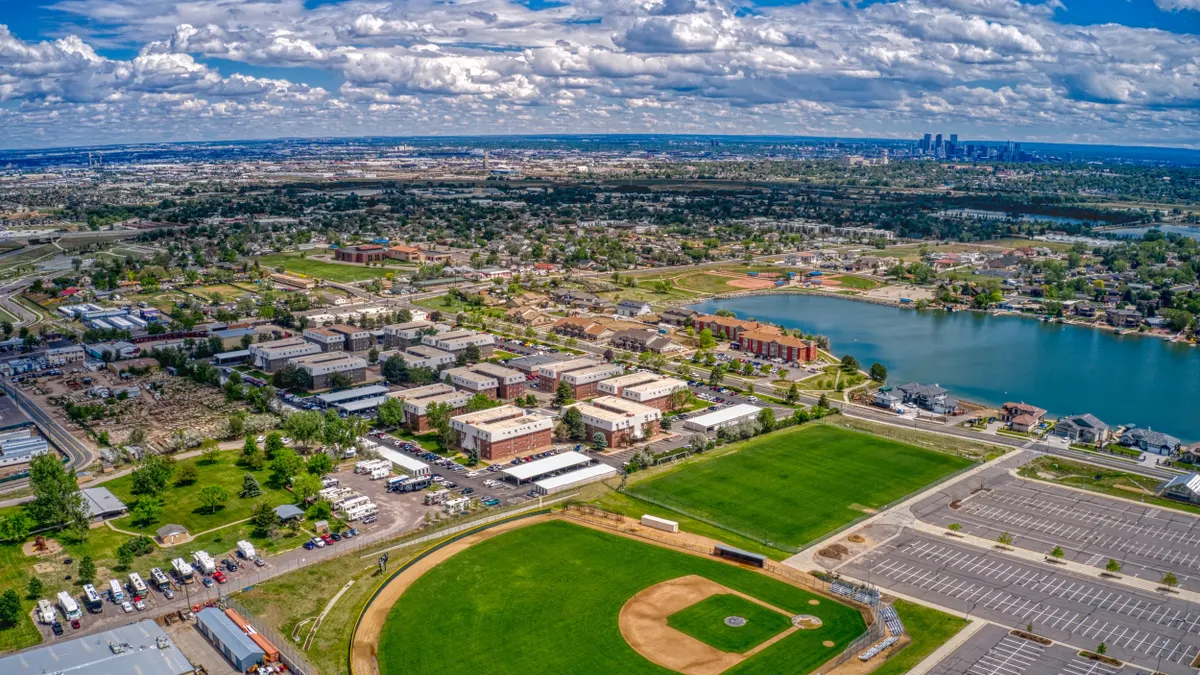Editor's note: This article was originally published in American City & County, which has merged with Smart Cities Dive to bring you expanded coverage of city innovation and local government. For the latest in smart city news, explore Smart Cities Dive or sign up for our newsletter.
State and local governments are at a crossroads, grappling with economic strain, workforce shortages and rising citizen expectations. In 2025, government technology (govtech) will grow as generative AI, automation and advanced cybersecurity redefine productivity, streamline public services and fortify resilience against modern threats. However, with innovation comes risk, and the public sector must strike a careful balance. This article breaks down the six biggest trends set to shape govtech in the year ahead.
Govtech boom shows no signs of slowing
With an annual average growth rate of 15% from 2020 to 2023, the govtech market is poised for even more growth in 2025. This growth is expected to be driven by additional cuts in U.S. interest rates, which typically lead to more transactions and increased investments in govtech and create a ripple effect of new businesses entering the space.
Overcoming the fear of innovation
Creating a supportive culture in the public sector that encourages calculated risks and rewards innovation is essential for driving meaningful transformation. Despite making significant technological advancements, many state and local government agencies are still cautious, prioritizing tried-and-true solutions over new innovations. Concerns about limited funding, resource allocation and the potential for failure often hinder investments in emerging technologies. However, this reluctance can hold back progress and limit the ability to address evolving challenges. To overcome this hesitation, agencies must emphasize to stakeholders the specific, measurable benefits of adopting cutting-edge tools, such as improved efficiency and cost savings.
Generative AI: The next frontier in public sector productivity
State and local governments are beginning to explore the benefits of generative AI for automating workflows, extracting insights from vast datasets and enhancing citizen engagement. While this technology has significant potential for increasing productivity, it requires thoughtful governance to ensure responsible implementation and reliance on high-quality data. Although adoption is growing, many government agencies are cautious, waiting to see how AI fits into their existing frameworks. Solution providers must focus on asking critical questions: Where can AI add the most value? How can we integrate it seamlessly into products? Will customers embrace these innovations?
Technology transforms government operations
High vacancy rates continue to challenge state and local governments, but technology is playing an important role in bridging the gap. Automation — powered by AI, machine learning and robotic process automation — is enabling agencies to streamline workflows, optimize resources and boost efficiency. By automating repetitive tasks such as document processing, compliance checks and data entry, staff can redirect their efforts to strategic priorities that have a greater impact on public services. This approach not only improves productivity and accuracy but also ensures faster responses to citizen needs while reducing operational costs and increasing transparency, even in the face of workforce shortages.
Cities and municipalities partner to thwart cyber threats
The escalating sophistication of cyber threats will push state and local governments, particularly smaller cities, to prioritize collaborative cybersecurity strategies. Limited budgets and IT resources will continue to hinder municipalities from independently implementing and maintaining robust defenses against threats like ransomware, phishing schemes and advanced persistent attacks. To address these challenges, cities will increasingly turn to trusted cybersecurity partners. These collaborations will focus on adopting zero-trust architectures, enhancing threat detection systems and developing rapid response protocols. By leveraging external expertise, municipalities will better protect critical infrastructure, ensure operational resilience and uphold public trust.
Network-powered procurement leads the way
In 2025, rising demands and tight budgets will accelerate the shift toward network-powered procurement in the public sector. This innovative approach connects procurement teams with peers, suppliers and collaborative technology tools to improve efficiency and resilience. By leveraging cooperative contracts, mitigating risks and supporting innovation through outcome-focused procurement, agencies can overcome workforce gaps and economic pressures. Network-powered procurement is no longer optional — it's the future, and it will empower governments to deliver better outcomes for communities.
Tackling long-standing challenges head-on
2025 is set to be a game-changer for govtech, with innovation and collaboration driving the modernization of government operations. From AI-powered solutions to network-driven procurement, state and local agencies have a chance to tackle long-standing challenges head-on and deliver real impact for their communities. But technology alone won’t cut it. Success hinges on embracing a culture of innovation, investing in capacity-building and forging strategic partnerships to boost resilience and efficiency. By embracing these opportunities and breaking down barriers, governments can redefine public service — making it more responsive, transparent and ready for future challenges.
Commentary is a space for state and local government leaders to share best practices that provide value to their peers. Email Smart Cities Dive to submit a piece for consideration, and view past commentaries here.
About the Author
Tom Amburgey is the CEO of Euna Solutions, a leading provider of purpose-built, cloud-based solutions for the public sector. In his role, Amburgey leads the overall strategic direction of Euna by collaborating closely with teams across the company to spearhead growth initiatives and ensure an exceptional and differentiated customer experience. With more than 20 years of government technology experience, Amburgey has held leadership positions with government technology solutions providers and served as the CIO of two Florida municipalities — the city of Hallandale Beach and the village of Wellington.









